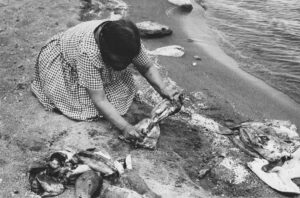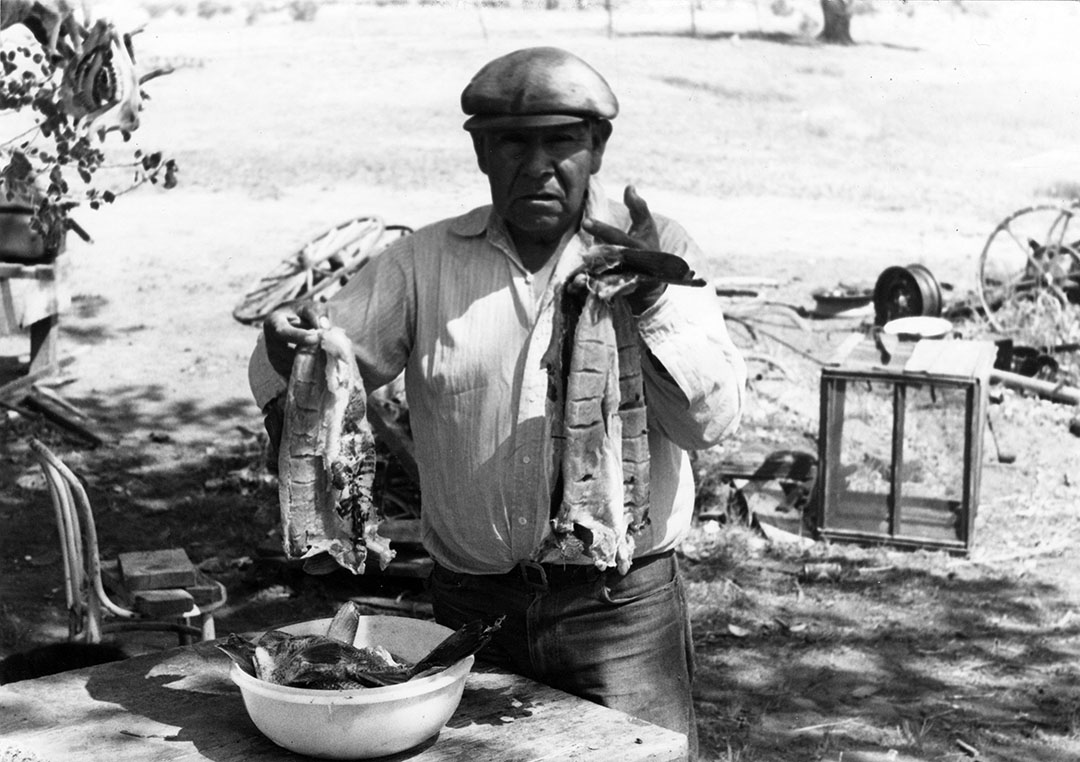The Pyramid Lake Paiutes’ cui-ui.
Maybe you’re like me and enjoy a game of trivia, especially when the questions are about Nevada. So here’s one for you: What fish is endemic to Pyramid Lake and the lower Truckee River — and found nowhere else on earth? The answer, in case you don’t already know, is the cui-ui (the Native pronunciation of which is koo-yoo-e, though today its Anglicized pronunciation is kwee-wee), a large sucker fish that shares the ancestral home of the Pyramid Lake band of Northern Paiute people. It was so central to their traditional life that the tribe called themselves “Cuiyui Ticutta,” meaning cui-ui eaters.
Today, Pyramid Lake, that spellbinding expanse of blue about 35 miles north of Reno, is better known as a world-class playground for fishermen seeking Lahontan cutthroat trout. The lake is owned and entirely managed by the members of the Pyramid Lake Paiute Tribe, which has been federally recognized since 1936. Calling themselves The People or Numu, the tribal members are direct descendants of the Northern Paiute, who have occupied the vast areas of the Great Basin since time immemorial.
An Important Food Source
Along with Lahontan cutthroat trout, the cui-ui was an important food source for the Cuiyui Ticutta and neighboring Paiute bands, who would travel to Pyramid Lake to share in the springtime harvest.
While today the trout is prized more for its taste, in 1917, John Otterbein Snyder wrote of the cui-ui that “the flesh of this species is highly prized by the Indians. At present, numerous little camps may be seen along the [Truckee] river during the spawning period. The fishes are caught in large numbers and tons of them are dried for later use.”
The maximum size of the male cui-ui is about 21 inches long and 3.5 pounds; interestingly, females are longer and heavier.
Cui-ui have been classified as endangered since 1966, meaning the tribe must work within the confines of many federal restrictions.
“We are working right now in our hatcheries for recovery of the cui-ui,” says Mervin Wright, environmental manager for the tribe, adding that the annual cui-ui harvest has halted due to United States Fish and Wildlife Service regulations.
There also are challenges beyond the tribe’s power to correct, such as water quality and quantity, and management.
“Survival of our fish is beyond what we can do,” Wright says, “as long as polluters are not regulated and until the environment and the ecosystem become a priority.”
Before irrigation and the diversion of water for power changed the river flow, cui-ui would gather at the mouth of the Truckee, swimming upstream against the swift current, so numerous that they would jam together two and three feet deep. Sometimes schools of them became stranded, thrashing helplessly in the shallow water, and gulls, cormorants, and pelicans would swoop down. The circling pelicans were a signal to the Paiutes that the cui-uiad arrived, and word swiftly spread through the community that the fish were running.
Traditional Skills Used in Fishing
Despite its unfortunate title, the book Survival Arts of the Primitive Paiutes, by Margaret M. Wheat, is an amazing peek into traditional skills, including fishing heritage. Starting in 1949, Wheat photographed and recorded her firsthand experiences with tribal members who respected the old ways. She described how one woman, Katie Frazier, dried fish in the customary manner. Working on the shore of the lake, Frazier removed the heads, then cut the cui-ui down the back on both sides of the vertebrae, removing the entrails and backbone at the same time. Then she trimmed off the fins and, finally, washed the fish before setting them out to dry.

Wheat documented how Harry Winnemucca cut across the flesh to keep the fish from curling, tied their tails together, and hung them up with the flesh side out. Early explorers often saw the fish hanging from willow frames and racks nearby. Every morsel was saved. Clusters of fish eggs and entrails were pulled apart, spread out on winnowing trays, and later stored in bags. The meat, eyes, tongues, and bits of flesh from the head became finger food. In winter, dried parts could be ground and boiled to make a soup.
Pyramid Lake is a remnant of ancient Lake Lahontan, the giant inland sea that once blanketed most of Nevada. It’s estimated that the cui-ui have been around for more than two million years, and still the importance of this ancient fish endures for the Cuiyui Ticutta, who still share the desert lake with them.
Sharon Honig-Bear was the longtime restaurant writer for the Reno Gazette-Journal. She is a tour leader with the Historic Reno Preservation Society and a supporter of all things cultural and historic. She can be reached at Sharonbear@sbcglobal.net.


